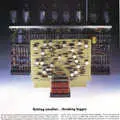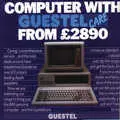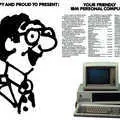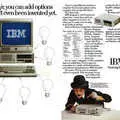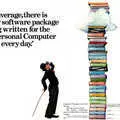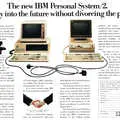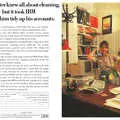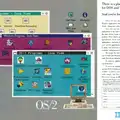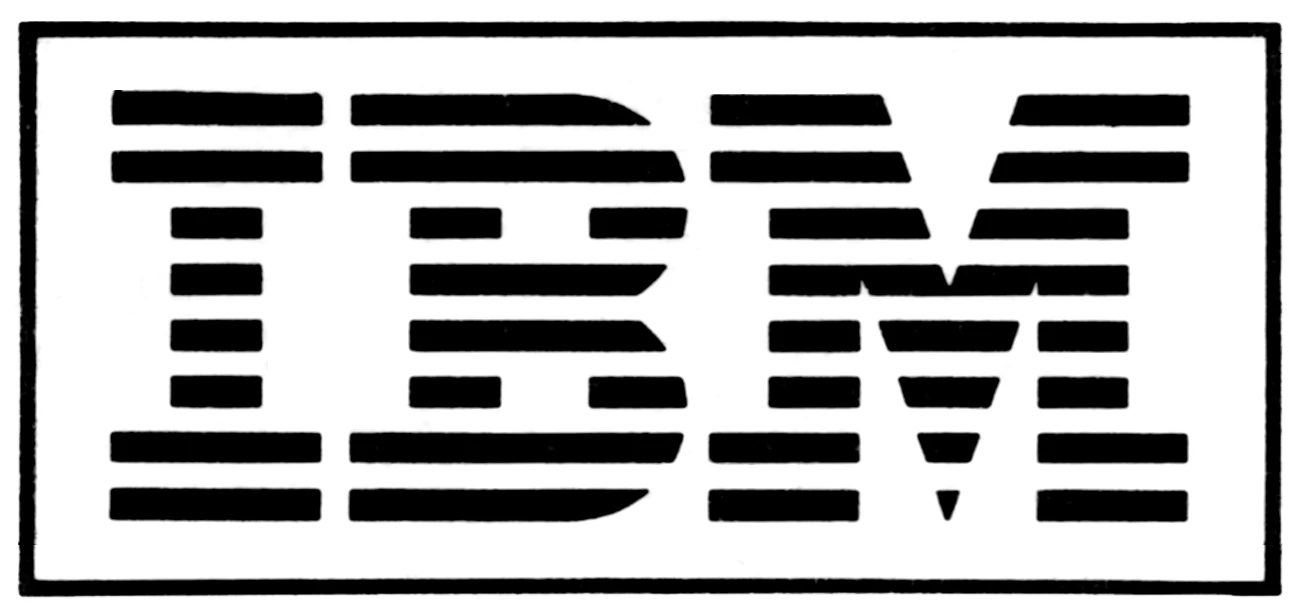
IBM Advert - July 1987
From Personal Computer World
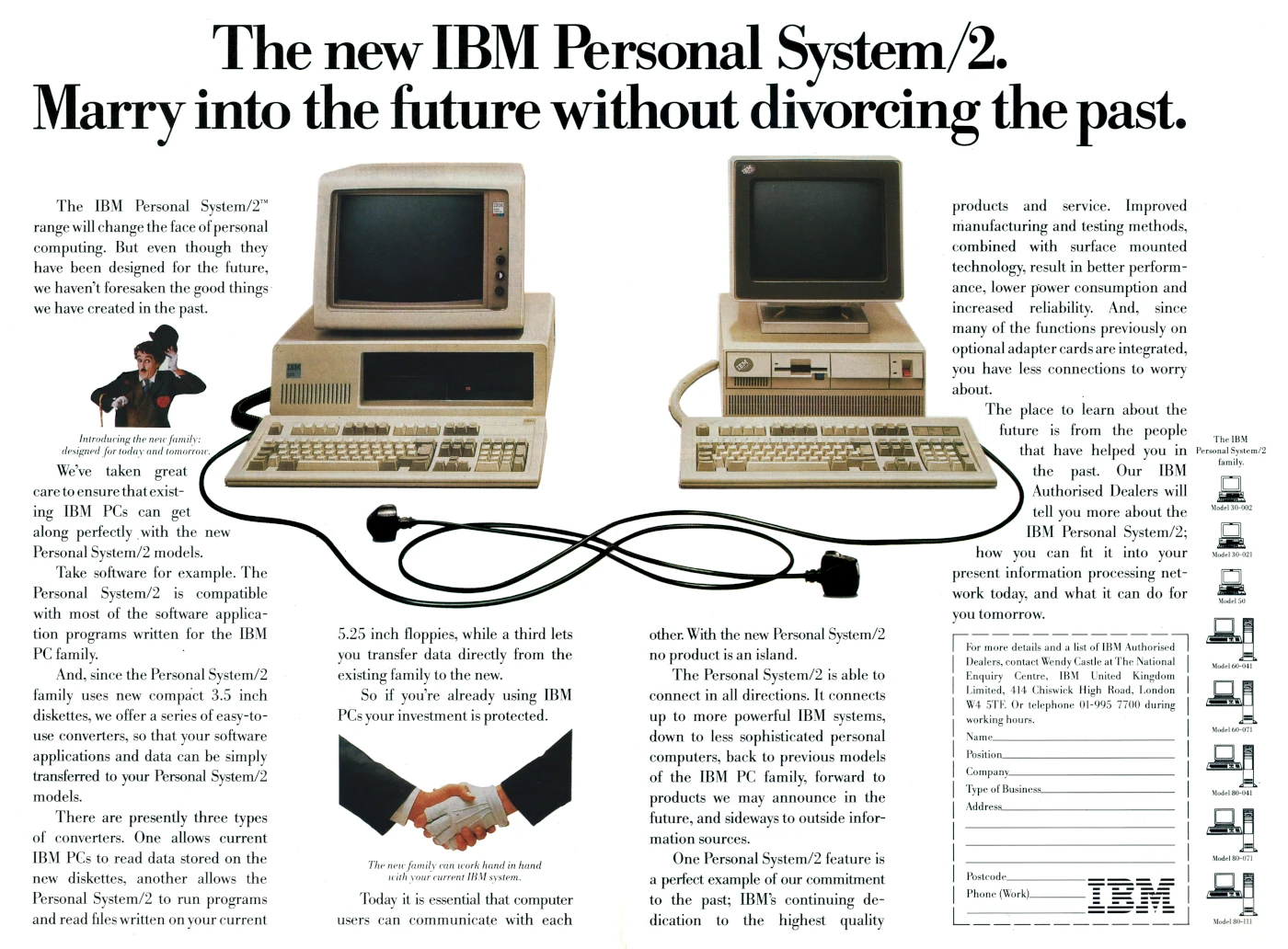
The new IBM Personal System/2. Marry into the future without divorcing the past.
By 1986 IBM was suffering, partly from the rise of the clones of its original IBM 5150 (the "PC"), but also because it had slowed down product releases in the PC market it had created in favour of development of its entirely new architecture - the PS/2, or Personal System/2, in a continuation of its sometime mainframe-naming scheme, like System/360.
The company recorded its worst quarter since around the launch of the 5150 four years before, when it announced annual earnings for 1986 of "only" £2.93 billion (£11 billion in 2025).
This was followed by a drop in profits for the first half of 1987, making it the first time that IBM had recorded a drop in earnings for two consecutive years since the 1930s. The company had undertaken cost-cutting measures and its chairman, John Akers, was optimistic, saying
"We have yet to fully benefit from our recent product announcements, retirement incentives and other resource-balancing measures. We remain optimistic about the prospects for both the industry and IBM".
The announcements included the PS/2 as well as a new range of 9370 minicomputers[1].
The PS/2 was launched during April 1987 and broke away significantly from the tecnhology of the earlier 5150 PC, and its updates the XT and AT, in its use of Micro Channel Architecture - technology which was largely an attempt to introduce a new proprietary 16-bit bus architecture that would not be easily cloneable.
Clone manufacturers however rejected IBM's high licensing costs and instead developed their own EISA expansion, which ultimately prevailed, although some of the PS/2's features came along for the ride, like the 6-pin mouse and keyboard connectors which remained prevalent until well into the 21st Century.
It was also hampered by the fact that the operating system that was being written especially for it - Microsoft's OS/2 - wasn't actually available at the time of launch, and wouldn't be for several months, and so it initially shipped with an updated version of bog-standard PC-DOS (MS-DOS).
Several models were released, including an entry-level model 30 which used a 7.54MHz Intel 8086, whilst the models 40 and 50 made use of the newer 80286, as well as 640x480 pixel ECGA graphics[2].
Whilst Microsoft was delayed, Digital Research was clearly hoping to capitalise as it announced that it was to produce its entire range of Gem presentation software for the PS/2, available on the newer 3½" format from June 1987.
DR's president and chief executive Dick Williams seemed excited about the new machines, saying:
"These new computers, with enhanced high-resolution graphics and a mouse option, are ideally suited to being operated with the Gem presentation graphics product line"[3].
At the same time, Microsoft was announcing details of its own PS/2 offerings, the most significant of which was the delayed OS/2 - the multi-tasking, single-user operating system for the 80286 and 80386 versions of the PS/2 - which it was expecting to be generally available by 1988. Chairman Bill Gates said of the launch that
"MS OS/2 provides the foundation for the next phase of exciting growth in the personal computer industry. [It] will be the platform upon which the next 1,000 exciting personal computer applications software products will be built".
Also announced was an updated version of MS-DOS - version 3.3 - for regular IBM PCs and all their clones, plus Windows Presentation Manager 2.0[4].
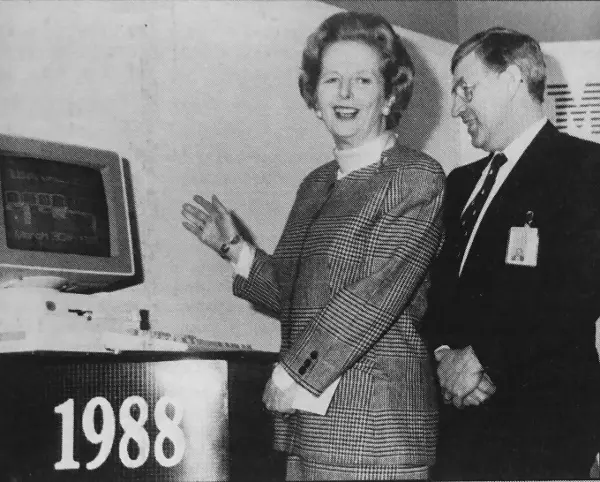
Margaret Thatcher with the UK general manager of IBM, and a PS/2 © Personal Computer World June, 1988The launch of the PS/2 was also significant for the UK - or at least Scotland - as it was to be manufactured at Greenock, west of Glasgow, where IBM had been since 1951.
This meant that for once IBM could be reasonably competitive, with its entry-level Model 30 starting from £1,300 and the 286 machines with 20MB hard drives at £3,000.
These weren't prices that would worry Alan Sugar, but were still a sign that IBM was more serious about competing on all levels of the market.
By 1987, IBM had become the dominant influence on the market, a situation much changed from five years before when its original PC had been launched, when it had been roundly derided for its run-of-the-mill technology and dullness.
Popular Computing Weekly had even suggested that IBM stood for "Incredibly Boring Machines", however as the market discovered they were still IBMs, did what they needed to do and eventually sold millions.
Attack on the clones
The PS/2 had been engineered to make it difficult to clone, with IBM UK's CEO Tony Cleaver stating "Innovation of the sort you see in these products is expensive and we believe we have a right to ensure that our ideas are not handed on a plate to our competitors".
Popular Computing Weekly helpfully suggested that it meant "you won't see a Compstrad Personal Clone/2 coming out, at least not for a year or two".
Even so, there was still an expectation that its technology would eventually make its way into the market at large, even though not all of it was at the cutting edge, as clone company Akhter had already beaten IBM to launch 3½" disks.
Akhter's Andrew Seal said of the PS/2's launch that:
"We're very pleased - we believe the 3½" format is the right technology for the future, and we're pleased IBM thinks so too, because, after all, it is the world leader".
Seal's view was also that the PS/2 wouldn't impact upon its own business, or as he said "in fact it will do the opposite, by breathing life into the PC field, and encourage stability in the business".
Bob Garrett of Olivetti, Peter Bayley of Compaq and even Alan Sugar of Amstrad were all on the record saying that the PS/2 would not affect their sales, the theory being, as stated by Geoff Pick of AMT, that:
"The market that has been set up by IBM in terms of AT/XT compatible machines is now the mass market. What IBM does [now] won't affect that mass market"[5].
For once, the pundits were fairly on the money.
Just a few months into what Popular Computing Weekly was referring to as the PS/2's "brief but turbulent history", IBM was already announcing an even-cheaper even-more-entry-level version of the machine in the shape of the Model 25.
Aimed mostly at the education sector, the 25 didn't even come with a hard drive, but was also smaller and cheaper but, as usual, IBM was denying that the machine would be released in the UK - even though that might put its price under the magical £1,000 barrier.
At the other end of the scale it also tweaked its up-market 80386-based Model 80[6].
Meanwhile, according to Popular, most of the industry was still wondering what point there was to the PS/2 without Microsoft's OS/2 to run on it.
However, some companies were producing add-ons, including one of the first to actually use the new Micro Channel Architecture (MCA) in the shape of the Everex RAM 4000 4MB expansion card.
Mark Simon, managing director of European importer Kudos Systems reckoned that the announcement was good news as "the OS/2 operating system will require a large memory size".
Problem was nobody really knew, as the delivery date of OS/2 was not now expected to be until the middle of 1988, some nine months away[7].
PS/2 hits the High Street
As it happened, the PS/2 was available in the UK from early 1988, and it was even possible to get one of the entry-level models - the PS/2 Model 30 - from Dixons, albeit one of only six of Dixons' shops that had been approved by IBM.
This approval of a mere High-Street retailer apparently caused significant friction among IBM's existing dealer network, most of which had had to go through some fairly stringent entry requirements.
IBM's plan had been to relax its requirements somewhat in order to let other dealers "carry the can", however in the end the only rule - which included staff numbers, shop frontage and square footage - that new dealers didn't have to comply with was that of financial stability.
Despite the dealer freak-out, it was still a surprise, at least to Guy Kewney of Personal Computer World, that Dixons was choosing to sell the Model 30 in the first place, not least because it was a business machine and not a home machine, but it wasn't even really a true PS/2, being a more standard 8086 box with 3½" disks and a £2000 price tag (£7,330 in 2025).
This was just a tiny bit more than the £600 that the Model 30 was going for in the US, but it did come with a bit of extra software, a printer and some on-site servicing.
As Kewney suggested, "that software had better be amazing software"[8].
Meanwhile, the race to clone IBM's new and "less cloneable" Micro-Channel Architecture was already underway.
In the April of 1987, there had been a rumour flying around which suggested that one of the first people to buy a PS/2 had been an employee of the company that had enabled the market for PC/AT and 386 clones with its reverse engineering - Chips and Technologies.
According to Guy Kewney, the rumour was probably true, as by the beginning of 1988 C&T was producing its own MCA chipset, together with a suitable motherboard to plug it in to.
By the summer of 1988, Compaq was working on its own MCA clone, although earlier leaks about it by Kewney had already caused some angst, including an impressive denial from Compaq's marketing director Peter Bailey, who suggested that Compaq was "not working on it to launch it, necessarily, [but] we are making sure we understand the technology".
Kewney reckoned that this was about as plausible as thinking that the company was equally spending millions on fusion reactors or gene splicing, just in case they needed to know how it all worked.
Perhaps Compaq hedging its bets was a reflection of the continue uncertainty over MCA, particularly as while IBM was launching its latest MCA-based Model 70, based on Intel's new 386SX processor.
IBM seemed to consider that the 386 was the first "full architecture" processor which could look like a mainframe, whilst Compaq itself seemed to be of the opinion that the older AT bus had "a few more years in it", with its own extensions stretching that to maybe a decade.
There was much uncertainty, but as Kewney pointed out, it wasn't as if Compaq could say to its users "don't make up your mind, put off buying a system for nine months or so, and see which way the market goes"[9].
Olivetti was another company that didn't seem quite sure about MCA, even though the rumours in March 1988 were that the Italian company had "scooped the world" by getting a PS/2 licence from IBM in order to build clones.
Instead, the company appeared to be spending lots of money launching some bog-standard but absurdley-expensive IBM AT clones in Paris, perhaps as a way of suggesting that it actually didn't have an MCA licence after all.
It eventually turned out that the MCA bus - the proprietary bit of the PS/2 that IBM hoped would make the machine un-clonable - hadn't even been mentioned in discussions between the two companies, and Olivetti seemed to be under the impression that it didn't actually need a licence to produce a PS/2.
However, when pressed about the issue, Olivetti's PC division president Filippo Demonte admitted that he "didn't even know if the Micro Channel [Architecture] was patented"[10].
Meanwhile, also at the protoype stage was Western Digital, which showing its own PS/2 chipset.
WD had a slight advantage in that its video-graphics-adapter subsidiary Paradise meant that it might be first to produce a full MCA/VGA system[11].
At the same time, Apple was teaming up with DEC in an attempt to break the IBM hegemony.
At first sight this might have looked like a valiant attempt to counter IBM's market dominance, however it was suggested that they would simply treat the market "in exactly the same way as IBM does, only more so".
IBM might have disliked the cloners, but at least during the original IBM PC era it had generally they left them to get on with it, and as a company had learned to "live within the law that has tamed it".
Whereas Apple, since it gave up on its early licencing programme to third parties, had become highly agressive in shutting down any sort of copy-cat or cloning operation, and was seen as being a lot more supressive of ideas "than IBM ever thought of being"[12].
Date created: 25 February 2020
Last updated: 11 December 2024
Hint: use left and right cursor keys to navigate between adverts.
Sources
Text and otherwise-uncredited photos © nosher.net 2025. Dollar/GBP conversions, where used, assume $1.50 to £1. "Now" prices are calculated dynamically using average RPI per year.
